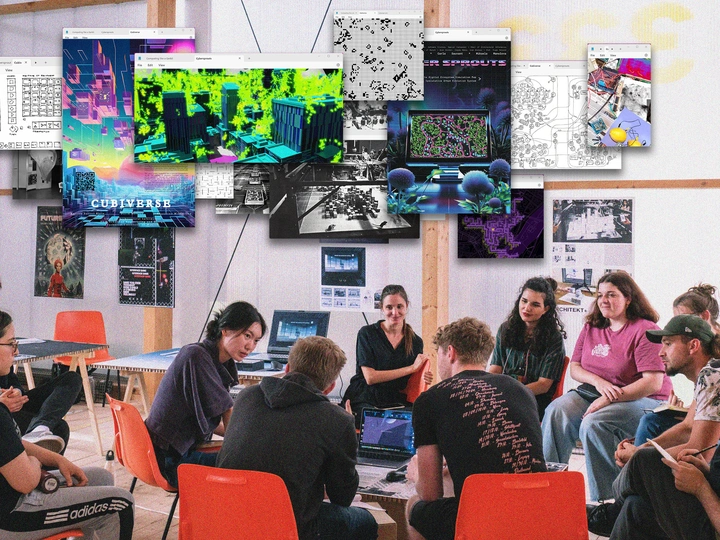Software Friction and Spatial Fantasies

Nick Förster
Ilayda Memis
“SF: Software Friction and Spatial Fantasies” emerges from a collaboration between researchers and architectural practitioners at the Chair of Architectural Informatics at the Technical University of Munich. Our team is situated between architecture, computer science, and urban theory.
Ivan Bratoev is a computer scientist working in the domain of architecture and urban planning. He focuses on environmental simulations and urban models and how to integrate these tools into design practices. In our team, Ivan contributes technical knowledge and enables participants to work with game engines, microcontrollers, sensors, and programming environments.
Nick Förster works at the intersection of architectural theory, digital design, and media art. Through speculative design approaches, academic teaching, and experiments in urban space, Nick investigates material, performative, and political dimensions of digital technologies in urban contexts. Regarding this project, Nick introduces hands- on engagements and speculative perspectives on historical projects of digitization.
Ilayda Memis works with architectural approaches towards human-computer interactions. She concentrates on spatial interfaces and embodied interactions within the architectural space. With a background in dance, she is interested in interdisciplinary and collaborative workshops, performative and participatory practices, and design-based research. For architecture SF, Ilayda contributes insights on interfaces and resonances between physical and digital spaces.
Finally, collaborations with diverse actors are crucial to our work – we do workshops with students of planning disciplines, but also exchange with architecture theorists, archives, and technical experts is crucial to our work.
Architectural Science Fiction of the long 70s foreshadows how we conceive urban ecosystems through digital technologies today: Buckminster Fuller’s “World (Peace) Game” emerged as an early resource-flow simulation, metabolist planners experimented with eco-cybernetic city structures, and Yona Friedman’s Ville Spatiale manifests an early open-source protocol for sustainable urbanism. While today’s Smart City systems often appear as disembodied techno-fixes or abstract doomsday calculations, these historical Sci-Fi visions highlight the architectural dimensions of digital technologies. Instead of falling into a utopia/dystopia binary, they delve into the spatiality and materiality, into contradictions and complexities of urban computation.
Following feminist thinkers like Donna Haraway or Anna Tsing, we appropriate architectural SF as an experimental engagement combining historical research, digital crafting, and speculative design. Through re-enactments of historical ecological computation projects, we delve into both their material and narrative aspects. Speculative design approaches allow us to entangle these insights with contemporary debates around urban ecologies, looming crises, and survival tactics.
Workshops at the TUM Chair of Architectural Informatics involved collaborations among students of architecture, theorists, archives, and data scientists, leading to a small franchise of architectural Sci-Fi: The Ville Spatiale is re-cast as a participatory machine to program planetary scenarios. Experimental simulations appropriate slime mold imaginaries and cellular automata to speculate about cohabitations between urban species.
On this foundation, we will continue investigating architectural visions of environmental computation in specific temporal and regional contexts. Focussing on situated historical Sci-Fi visions, we discuss how to critically re-appropriate these perspectives today and interweave them with contemporary controversies.